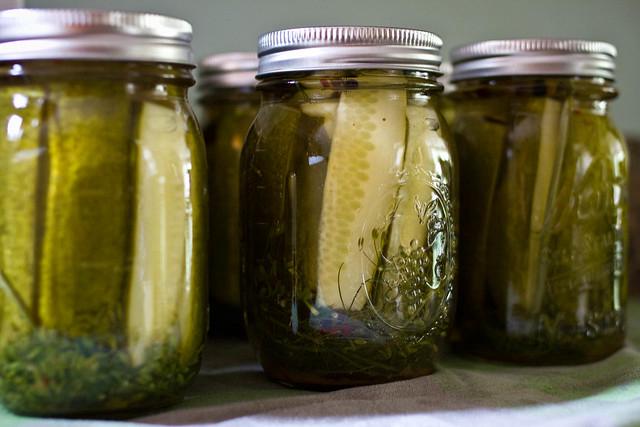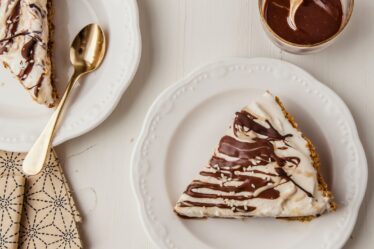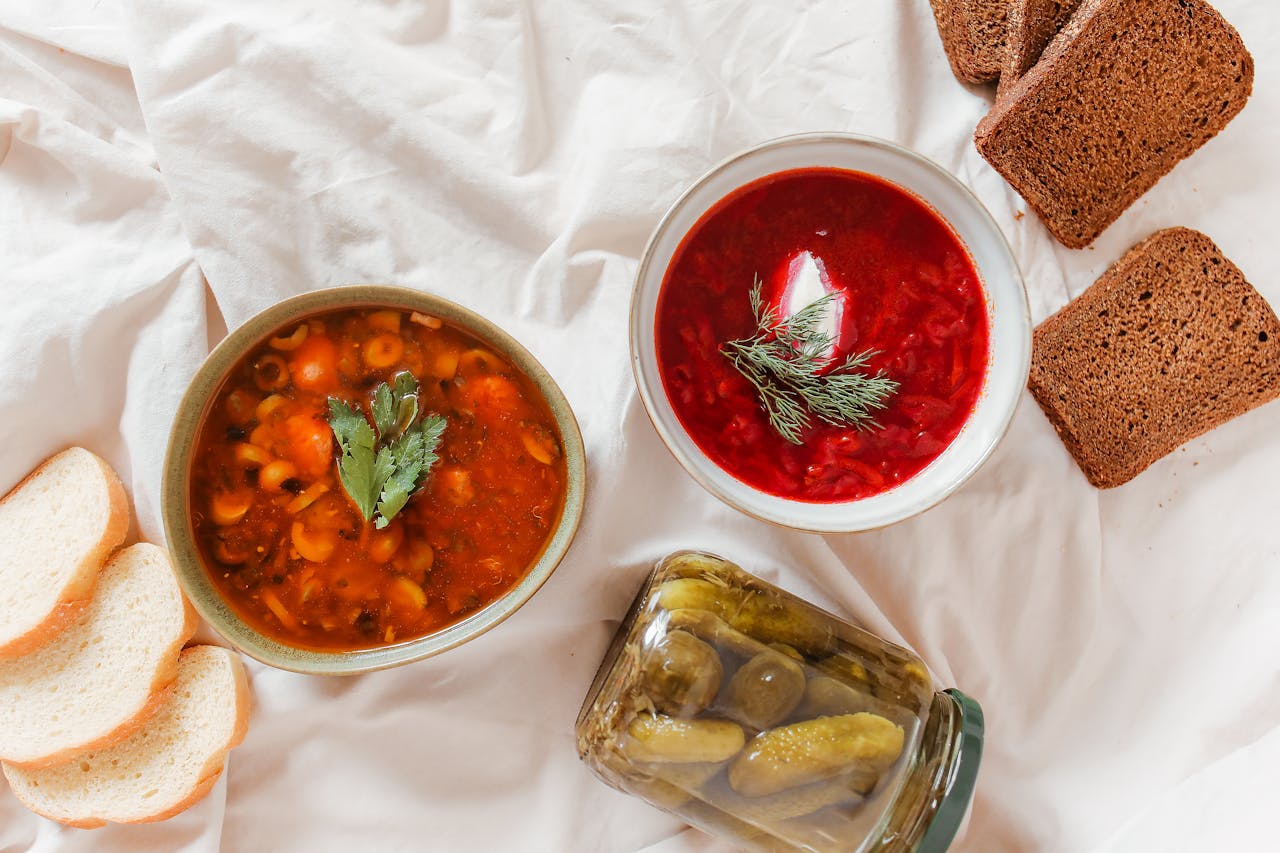
Background and Introduction to Dill Pickles
Dill pickles, those crisp and tangy delights, have earned a special place in American cuisine. From enhancing burgers to elevating Bloody Marys, these little green gems bring a burst of flavor that's hard to resist. Pickles have roots in ancient civilizations, but they've found a unique home in the U.S., becoming a staple of comfort food.
The appeal of dill pickles lies not only in their taste but also in the experience they provide. The simple joy of biting into a perfectly brined cucumber, with its intricate layers of spice and herbs, is almost magical. Integrating dill pickles into meals has become a rite of passage in American kitchens, thanks to their versatility in various recipes.
The charm of dill pickles also lies in the simplicity of their creation. The transformation from a humble cucumber to a zesty pickle involves a fascinating alchemy of vinegar, salt, and a carefully curated blend of pickling spices. Balancing sweet, sour, and salty elements while infusing them with aromatic spices results in a pickle that can elevate any dish or be savored straight from the jar.
Pickles have transcended from being just a condiment to a symbol of culinary ingenuity. They're featured in food competitions, artisanal deli menus, and even in high-end culinary experiences. Dill pickles have earned their place as an American favorite not just for their taste but for their ability to bring people together around a table, sparking conversations and creating memories.
As you consider including dill pickles in your next meal, remember that they are more than just a sidekick; they are a testament to a time-honored tradition, a celebration of flavors, and a bridge connecting the past with the present. The journey of a dill pickle from vine to vinegar, infused with spices, and onto your plate, captures the essence of culinary craft and cultural significance. So, the next time you reach for that jar, think of it as not just a condiment but a story, a tradition, a little piece of history in each crunchy bite.
Choosing the Right Cucumbers
When preparing dill pickles, selecting the perfect cucumbers is a vital step that ensures the final product's crispness and flavor. The type of cucumber you choose can significantly impact the texture and taste of your pickles.
Pickling cucumbers, sometimes referred to as Kirby cucumbers, are distinct from regular cucumbers you might find in a grocery store. These specialty cucumbers are shorter, typically around three to four inches in length, with a bumpy, thin skin and a dense interior. The compact structure of pickling cucumbers helps them retain their crunch even after the brining process, providing that satisfying snap with every bite.
Regular cucumbers tend to be longer and have a smoother, waxy skin. The wax coating on regular cucumbers, applied to keep them fresh longer, can hinder the pickling liquid's penetration, affecting the overall flavor. The flesh of these cucumbers is often more watery and less dense, which can result in a soggier pickle.
When selecting cucumbers for pickling at the market, look for the following qualities:
- Firmness: Choose cucumbers that feel firm to the touch. Avoid any that feel soft or have blemishes, as these imperfections can lead to a mushy pickle.
- Size: Smaller cucumbers, generally no longer than four inches, are ideal. Their smaller seed cavity and tighter flesh help maintain crispness.
- Freshness: Freshly harvested cucumbers are paramount for the best results. Look for vibrant green cucumbers with no yellowing or shriveling at the ends. Freshly picked cucumbers will be more resilient during the pickling process.
- Variety: Whenever possible, prioritize pickling cucumber varieties such as Kirby or other heirloom types specifically grown for their pickling qualities.
These guidelines will help you choose the best cucumbers, laying a solid foundation for creating dill pickles that are both flavorful and delightfully crunchy. Each step in the pickling process, starting from the selection of cucumbers, plays a crucial role in achieving those perfectly preserved, tangy delights.
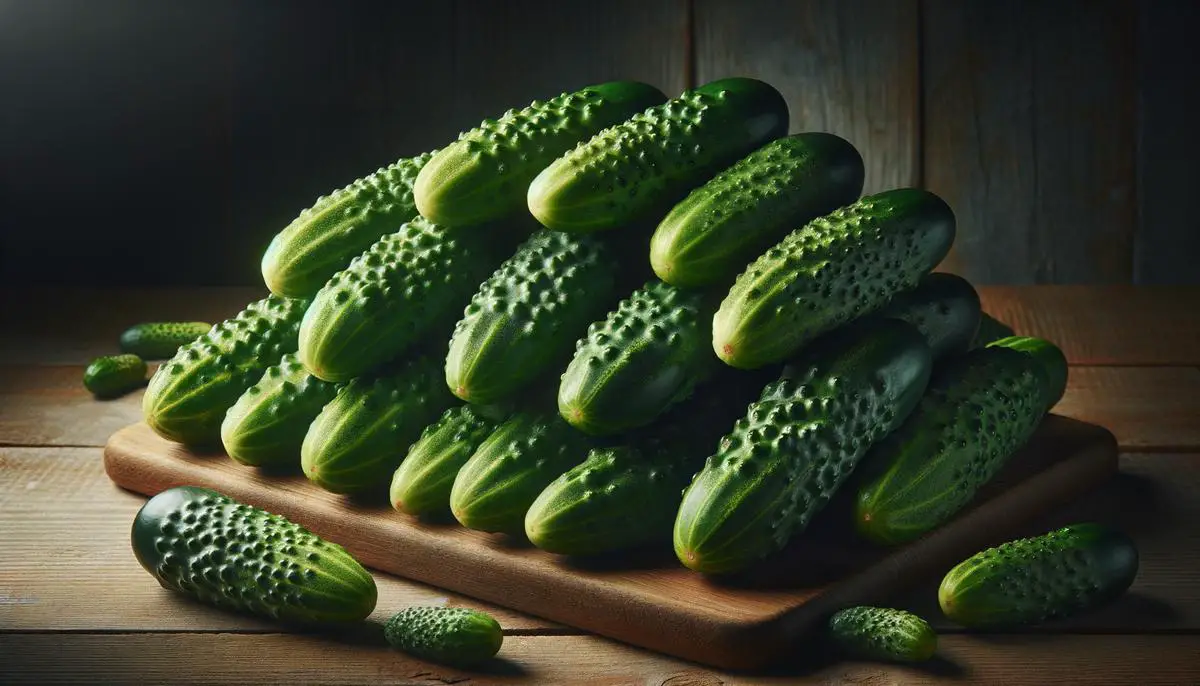
Essential Ingredients for Dill Pickles
Cucumbers, the star ingredient, should be firm pickling varieties like Kirby. Choose either apple cider vinegar for a slightly sweet undertone or white vinegar for a clear, tart profile, ensuring at least 5% acidity. Filtered or distilled water avoids impurities that could affect flavor and safety.
Pickling salt, free from additives, keeps the brine clear and the cucumbers crisp. Fresh dill, as heads or sprigs, introduces a signature aroma. Crushed garlic cloves add depth, while pickling spices like mustard seeds, coriander seeds, dill seeds, peppercorns, and bay leaves contribute complex flavors. Red pepper flakes offer optional heat, and a small amount of sugar or honey can balance the acidity.
This combination creates delicious, crisp pickles with a balanced nutritional profile. Cucumbers are low in calories and hydrating, vinegar aids gut health, garlic has anti-inflammatory properties, and dill adds antioxidants. The minimal salt used preserves without excessive intake.
Recipe:
Ingredients:
- 8 pounds small pickling cucumbers (3 to 4-inches long)
- 4 cups distilled white vinegar
- 4 cups water
- ¾ cup white sugar
- ½ cup pickling salt
- 7 bay leaves (1 per jar)
- 7 dill flower heads or sprigs of dill foliage (1 per jar)
- 7 cloves garlic, peeled and crushed (1 per jar)
- 3 1/2 teaspoons mustard seeds (1/2 teaspoon per jar)
- 3 1/2 teaspoons dill seeds (1/2 teaspoon per jar)
- 3 1/2 teaspoons red pepper flakes (1/2 teaspoon per jar)
- 3 tablespoons pickling spice, wrapped in cheesecloth
Instructions:
- Prepare the canning equipment: Wash jars, lids, screw bands, and canning tools in hot soapy water. Rinse thoroughly. Place the jar rack in the water bath canner, add jars, cover with water, and bring to a simmer (180˚F) for 10 minutes.
- Make the pickling brine: Add pickling spice to a spice bag. In a large saucepan, combine white vinegar, water, sugar, pickling salt, and spice bag. Boil and stir to dissolve sugar and salt, simmering for 15 minutes. Remove spice bag.
- Prepare cucumbers: Rinse under running water, remove spines, and cut off 1/8-inch from each end. Leave whole, or cut into halves, spears, or slices.
- Can the dill pickles: Remove a warm jar from canner, add 1 bay leaf, 1 dill flower head, 1 clove crushed garlic, 1/2 teaspoon mustard seeds, 1/2 teaspoon dill seeds, 1/2 teaspoon red pepper flakes. Pack cucumbers vertically into the jar leaving 1/2-inch headspace. Add hot brine over pickles maintaining headspace, remove air bubbles, wipe the rim, center the lid, and screw on the band. Repeat with remaining jars.
- Process: Adjust water level in the canner to 2-inches over jars, cover, and bring to a boil. Process for 15 minutes at altitudes of less than 1,000 feet. Adjust processing time for higher altitudes if necessary. After processing, cool jars on a towel for 12 to 24-hours. Check seals and refrigerate any unsealed jars. Remove screw bands, wash jars, label, and store in a cool, dark location. Allow 4 to 5 weeks for flavor development. Use within a year.
Nutritional information per serving (1 spear, 35g):
Calories: 4 kcal
Carbohydrates: 1g
Protein: 0.1g
Fat: 0g
Sodium: 218mg
Fiber: 0.2g
Sugars: 0.7g
Vitamin K: 3.8mcg
Vitamin C: 0.7mg
Calcium: 8.4mg
Iron: 0.1mg
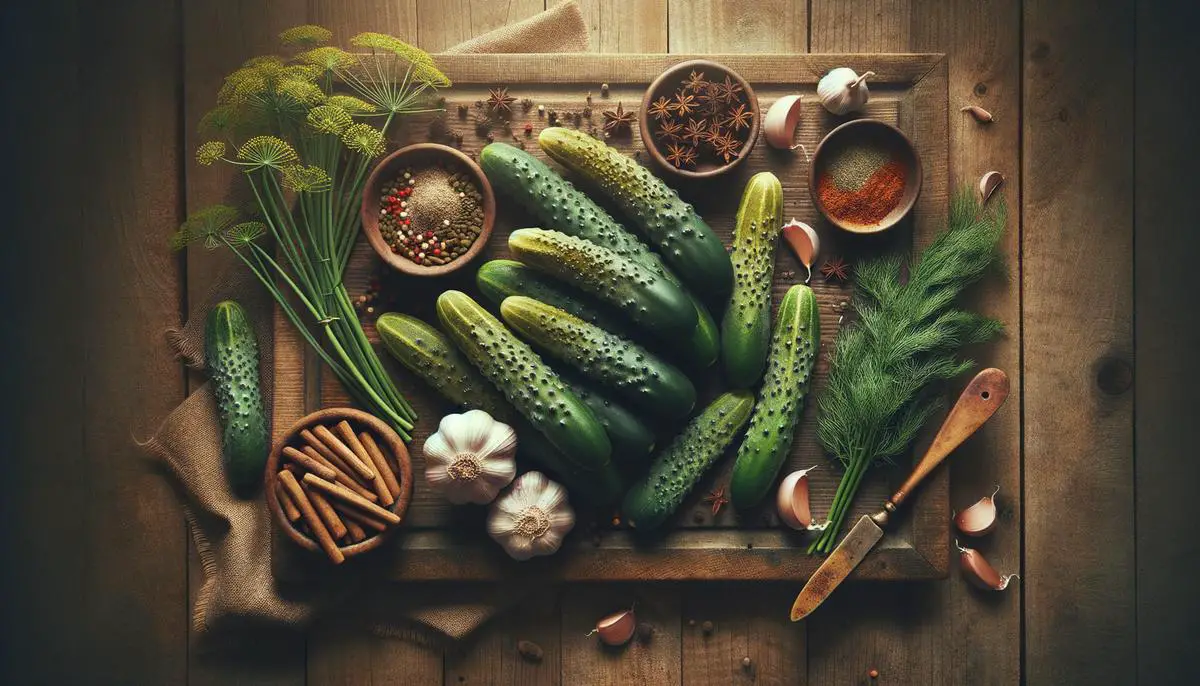
Understanding Pickling Brine
The brine solution, a balance of water, vinegar, sugar, and salt, is foundational in the pickling process, determining preservation and flavor.
Water, the primary solvent, distributes components evenly. Filtered or distilled water prevents impurities from affecting taste and safety.
Vinegar ensures acidity levels prevent spoilage microorganism growth, extending shelf-life. White vinegar maintains cucumber color and provides sharp acidity. Apple cider vinegar offers a sweeter, complex flavor but may darken pickles. Rice and wine vinegars bring unique nuances for a milder profile.
Sugar moderates vinegar sharpness, adding subtle sweetness. Granulated sugar dissolves easily; honey can substitute for natural sweetness.
Salt enhances flavor and maintains texture. Pure pickling salt lacks iodine and anti-caking agents that cloud brine and affect taste and texture.
To prepare the brine:
- Combine water, vinegar, sugar, and salt in a large, non-reactive saucepan (stainless steel or enamel-coated).
- Boil to dissolve sugar and salt, ensuring even flavor distribution and stabilized acidity for preservation.
- Reduce to a simmer, maintaining heat while filling jars with cucumbers and spices. Keeping the brine warm prevents premature cooling, which could impact the pickling process.
Precise proportions and consistent temperature throughout brining secure crisp, flavorful pickles. The brine imbues cucumbers with a harmonious blend of tangy, sweet, and salty notes that define excellent dill pickles.
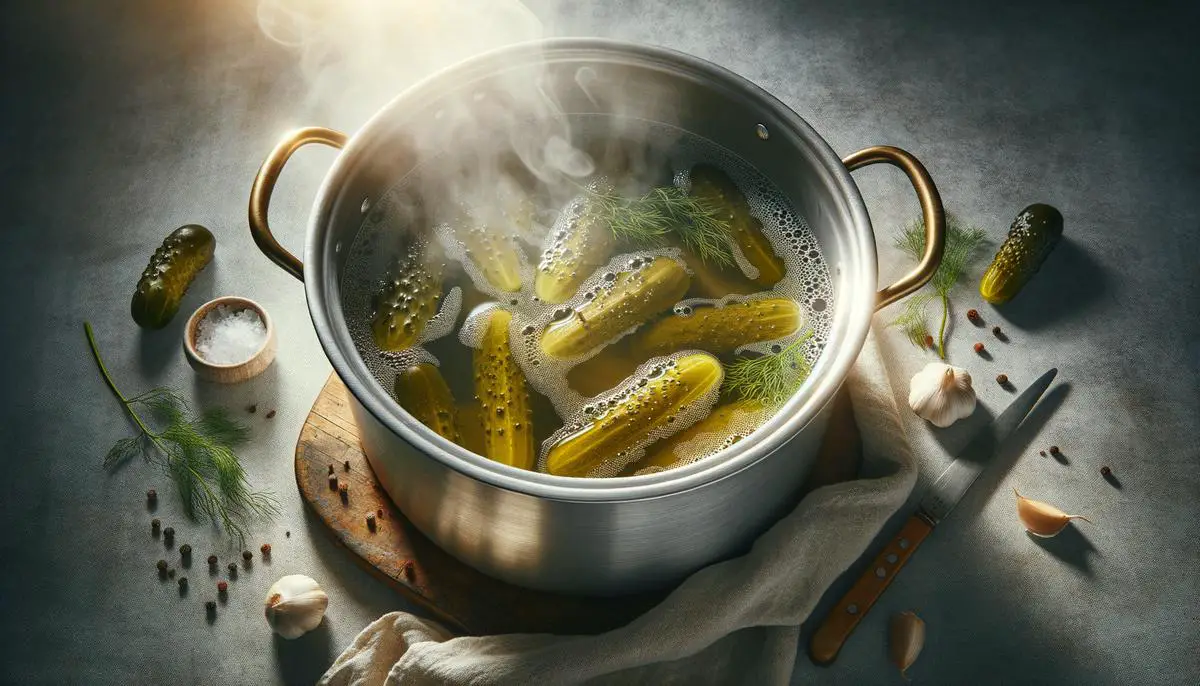
Preparing the Cucumbers and Jars
Choose firm, blemish-free cucumbers, ideally Kirby cucumbers no longer than four inches. Wash them thoroughly under cold running water and pat dry. Trim 1/8-inch from each end to remove enzymes that can soften pickles. Leave cucumbers whole, cut into spears, or slice into coins using a mandoline slicer for consistent thickness.
Wash canning jars, lids, and screw bands with hot, soapy water, rinse thoroughly, and air dry. Sterilize the jars by placing them upright on a rack in a water bath canner, covering them with water by at least an inch, and simmering at 180˚F for 10 minutes. Soften the sealing compound on the lids by heating them in a small saucepan of water just below boiling.
Carefully remove the hot jars from the canner, pour out any water inside, and place them upright on a clean kitchen towel to prevent thermal shock.
Spicing Up Your Pickles
Elevate the flavors of your dill pickles by incorporating various spices and herbs. Mustard seeds offer a mild, nutty flavor with a hint of tang, while dill seeds enhance the herbal element. Coriander seeds lend a citrusy, slightly sweet note, and garlic infuses the brine with its robust, savory flavor. For a spicy kick, add chili peppers or crushed red pepper flakes.
To create a personalized pickling spice blend, combine:
- Black peppercorns
- Mustard seeds
- Coriander seeds
- Dill seeds
- Allspice berries
- Crushed red pepper flakes
- Crumbled bay leaves
Use a spice bag to infuse the brine with the spices' flavors, or distribute the spices directly into each jar along with fresh dill, a bay leaf, and a crushed garlic clove before packing the cucumbers and pouring the hot brine.
Experiment with different aromatic profiles to perfect a homemade pickle that is distinctively your own. Fresh, high-quality spices will yield a vibrant and flavorful pickle that stands out in any dish.
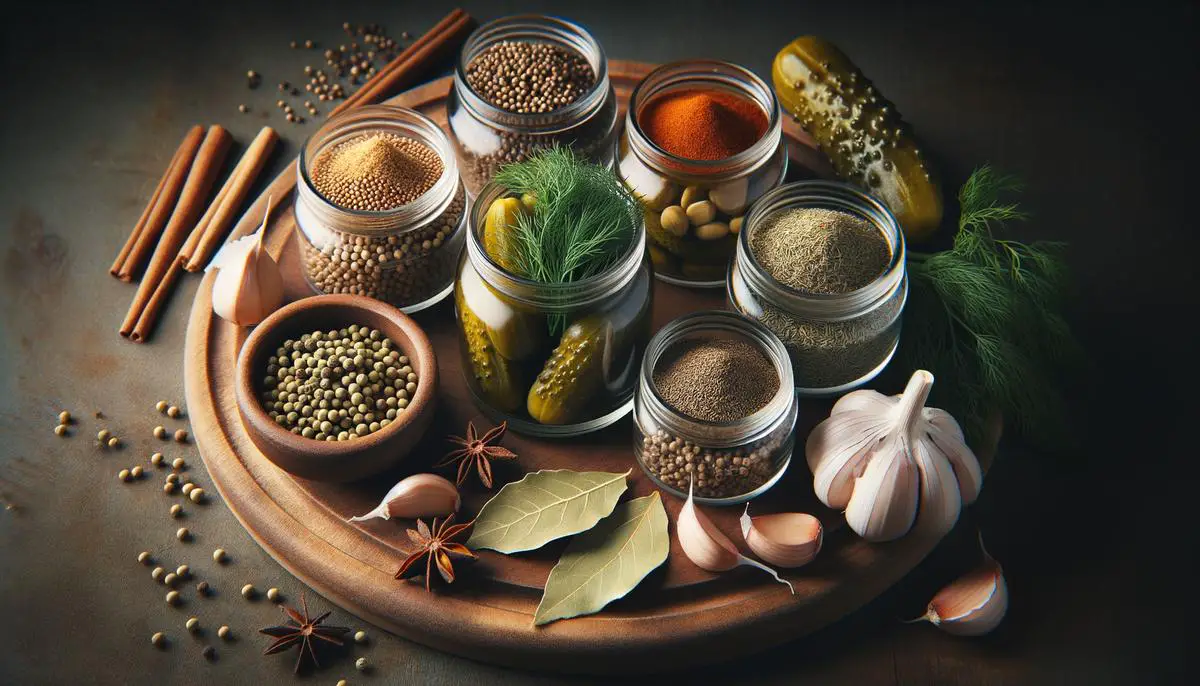
Canning Dill Pickles for Long-Term Storage
Ingredients:
- Distilled white vinegar
- Water
- White sugar
- Pickling salt
- Pickling spice
- Pickling cucumbers
- Bay leaves
- Dill flower heads
- Garlic cloves
- Mustard seeds
- Dill seeds
- Red pepper flakes
Steps:
- Prepare the Brine:
Combine distilled white vinegar, water, white sugar, pickling salt, and pickling spice wrapped in cheesecloth. Boil, stirring to dissolve the sugar and salt. Simmer for 15 minutes, then remove the spice bag. - Sterilize the Jars:
Wash jars, lids, and screw bands. Place the jars on a rack in a water bath canner, cover with water, and simmer at 180°F for 10 minutes. - Prepare the Cucumbers:
Rinse pickling cucumbers, trim off 1/8-inch from each end, and slice as desired. - Fill the Jars:
Add bay leaf, dill flower head, crushed garlic, mustard seeds, dill seeds, and red pepper flakes to each hot jar. Pack cucumbers vertically, leaving 1/2-inch headspace. - Pour the Brine:
Pour hot brine over cucumbers, maintaining 1/2-inch headspace. Remove air bubbles and adjust brine level if necessary. - Seal the Jars:
Wipe the jar rim, center a heated lid, and apply the screw band until fingertip tight. - Process the Jars:
Return filled jars to the canner, ensuring water covers them by two inches. Boil and process for 15 minutes, adjusting time for higher altitudes. - Cool and Store:
Remove jars from the canner and cool undisturbed for 12 to 24 hours. Check seals, refrigerate unsealed jars, and store sealed jars in a cool, dark location.
Allow pickles to stand for 4 to 5 weeks for flavor development and enjoy within a year for the best quality.
Nutritional information per serving (1 spear):
- kcal: 5
- carbohydrates: 1g
- protein: 0g
- fat: 0g
- sodium: 146mg
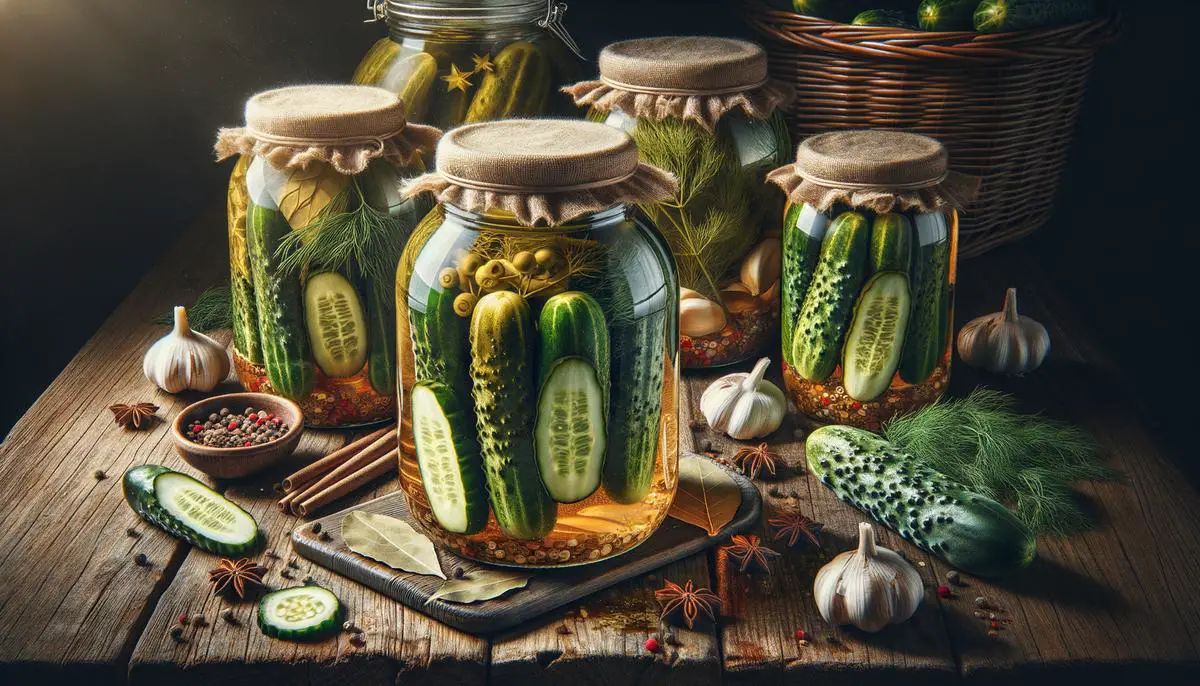
Quick Refrigerator Dill Pickles
Select firm, small pickling cucumbers, about 3 to 4 inches long. Wash them thoroughly, dry, and remove 1/8-inch from both ends to avoid enzymes that might soften the pickles. Keep the cucumbers whole, cut them into spears, or slice them into rounds, according to your preference.
Ingredients:
- 4 cups water
- 4 cups distilled white vinegar (5% acidity)
- ¾ cup white sugar
- ½ cup pickling salt
- 3 tablespoons pickling spice, wrapped in cheesecloth
- 7 bay leaves (1 per jar)
- 7 dill flower heads or sprigs of dill (1 per jar)
- 7 cloves garlic, peeled and crushed (1 per jar)
- 3 1/2 teaspoons mustard seeds (1/2 teaspoon per jar)
- 3 1/2 teaspoons dill seeds (1/2 teaspoon per jar)
- 3 1/2 teaspoons red pepper flakes (1/2 teaspoon per jar)
Instructions:
- In a large saucepan, combine water, distilled white vinegar, white sugar, pickling salt, and the pickling spice bag.
- Bring the mixture to a boil and stir until the sugar and salt are fully dissolved. Reduce the heat and let it simmer for about 15 minutes, then remove the spice bag.
Sterilize mason jars or glass containers with tight-fitting lids by washing them in hot, soapy water and rinsing well. Boiling the jars is unnecessary for this refrigeration method.
Place 1 bay leaf, 1 dill flower head, 1 clove of crushed garlic, 1/2 teaspoon mustard seeds, 1/2 teaspoon dill seeds, and 1/2 teaspoon red pepper flakes into each jar. Pack the cucumbers snugly, pour the hot brine over them, ensuring they are fully submerged, and leave about 1/2-inch headspace. Seal the jars with their lids.
Allow the jars to cool to room temperature before refrigerating. These quick refrigerator dill pickles require at least 24 hours for the flavors to meld, but they taste best after a few days. Store them in the refrigerator and consume within 1 month.

Versatile Uses and Serving Suggestions
Dill pickles add a delightful burst of flavor to countless dishes, enhancing both casual lunches and gourmet dinners. Their versatility makes them an indispensable ingredient in many culinary creations.
In sandwiches, dill pickles provide an extra kick. A classic Reuben sandwich benefits from a layer of sliced pickles, balancing the richness of corned beef and Swiss cheese. For a BLT, finely chopped pickles mixed into the mayonnaise create a tangy spread that complements the bacon and tomatoes. Vegetarian options, like grilled cheese sandwiches, gain a surprising and satisfying crunch with the addition of pickles.
Burgers are greatly enhanced by dill pickles. Layering thin pickle slices beneath the cheese elevates the overall flavor profile, providing a refreshing contrast to the savory elements.
In salads, craftily cut dill pickles transform the dish. Diced pickles in a potato salad introduce a sharp bite that contrasts with the creamy dressing. They also shine in coleslaws, balancing the sweetness of the cabbage and carrots. A chopped pickle relish invigorates garden salads, adding unexpected zest to the leafy greens.
Dill pickles are perfect on charcuterie boards alongside cured meats, cheeses, and assorted condiments. They introduce an acidic element that cuts through the richness of the other foods. Pickles also pair well with grilled or smoked meats; a few spears served with BBQ ribs or pulled pork sandwiches provide refreshing relief from the hearty flavors.
As garnishes, pickles offer creative possibilities. Finely chopped pickle relish makes an excellent topping for deviled eggs, lending a tangy counterpoint to the creamy yolk mixture. Diced pickles scattered over nachos or tacos add a piquant touch. In wraps or pitas, their crunch contrasts pleasingly with soft textures like hummus or falafel.
Pickles can be used in unconventional recipes as well. Pickle-brined fried chicken results in an extra juicy and flavorful dish. Finely chopped pickles mixed into homemade tartar sauce or aioli create a dipping sauce with a punch.
Embracing these various applications allows you to make the most of homemade dill pickles, integrating their vibrant flavor into daily meals and special dishes with ease.
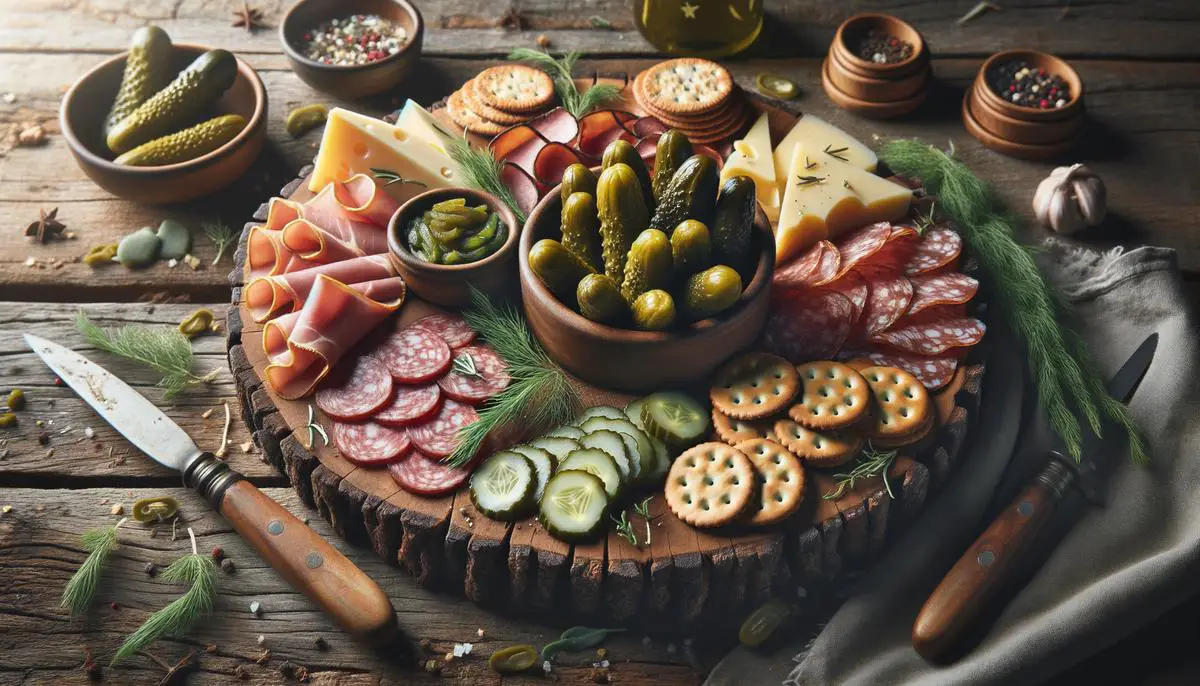
Recipe for Classic Dill Pickles with Pickling Spice
Ingredients:
- 8 pounds small pickling cucumbers (3 to 4-inches long)
- 4 cups distilled white vinegar (5% acidity)
- 4 cups water
- ¾ cup white sugar
- ½ cup pickling salt
- 7 bay leaves (1 per jar)
- 7 dill flower heads or sprigs of dill foliage (1 per jar)
- 7 cloves garlic, peeled and crushed (1 per jar)
- 3 1/2 teaspoons mustard seeds (1/2 teaspoon per jar)
- 3 1/2 teaspoons dill seeds (1/2 teaspoon per jar)
- 3 1/2 teaspoons red pepper flakes (1/2 teaspoon per jar)
- 3 tablespoons pickling spice, wrapped in cheesecloth
Instructions:
- Prepare the canning equipment: Wash jars, lids, screw bands, and canning tools in hot soapy water. Rinse thoroughly. Place the jar rack in the water bath canner, add jars, cover with water, and bring to a simmer (180˚F) for 10 minutes.
- Make the pickling brine: Add pickling spice to a spice bag. In a large saucepan, combine vinegar, water, sugar, pickling salt, and spice bag. Boil and stir to dissolve the sugar and salt, simmering for 15 minutes. Remove spice bag.
- Prepare cucumbers: Rinse under running water, remove spines, and cut off 1/8-inch from each end. Leave whole, or cut into halves, spears, or slices.
- Fill the jars: Using a jar lifter, remove a warm jar from canner, add 1 bay leaf, 1 dill flower head, 1 clove crushed garlic, 1/2 teaspoon mustard seeds, 1/2 teaspoon dill seeds, and 1/2 teaspoon red pepper flakes. Pack cucumbers vertically into the jar, leaving 1/2-inch headspace. Add hot brine over pickles maintaining headspace, remove air bubbles, wipe the rim, center the lid, and screw on the band. Repeat with remaining jars.
- Process: Adjust water level in the canner to 2 inches over the jars, cover, and bring to a boil. Process for 15 minutes at altitudes of less than 1,000 feet. Adjust processing time for higher altitudes if necessary. After processing, cool jars on a towel for 12 to 24 hours. Check seals and refrigerate any unsealed jars. Remove screw bands, wash jars, label, and store in a cool, dark location. Allow 4 to 5 weeks for flavor development. Use within a year.
Nutritional information per pickle spear (assuming 8 spears per jar, 7 jars total):
Calories: 5
Carbohydrates: 1g
Protein: 0g
Fat: 0g
Sodium: 65mg
Sugar: 1g
